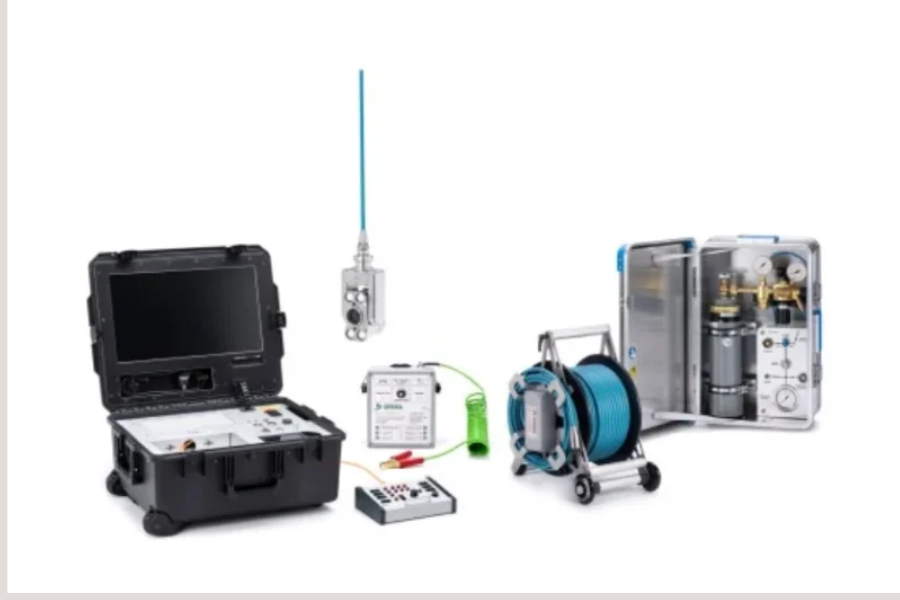Curious about DEKRA VT1000 pitting images? Whether you’re in the automotive industry, manage a fleet, or have a keen interest in vehicle inspections, deciphering these images can initially seem complex. But don’t worry—this guide will simplify things for you, helping you grasp the essentials of this technology.
In this article, we’ll explore what the DEKRA VT1000 is, why pitting images are crucial, and their role in enhancing vehicle safety. By the end, you’ll have a clear understanding of how this technology works and its impact on vehicle inspections.
What is the DEKRA VT1000?
The DEKRA VT1000 is a cutting-edge vehicle inspection tool designed to assess the condition of critical components such as tires and brakes. Developed by DEKRA, a global leader in safety and testing, this tool is particularly useful for detecting wear and tear in commercial fleets.
A key feature of the VT1000 is its capability to capture high-resolution images that reveal pitting—small depressions or wear patterns on vehicle components like brake discs and tires, which can compromise safety and performance.
Why Are Pitting Images Important?
Pitting images provided by the DEKRA VT1000 are essential for spotting early signs of wear that might be invisible to the naked eye. These images facilitate thorough inspections, helping identify potential issues before they escalate. For example, pitting on brake discs can impair braking efficiency, increasing the risk of accidents.
Utilizing these images allows fleet managers, mechanics, and drivers to better assess the vehicle’s condition and take proactive measures to repair or replace parts as needed.
How the DEKRA VT1000 Captures Pitting Images
The VT1000 employs high-resolution cameras and sensors to scan vehicle parts and produce detailed images. This tool captures even the smallest pits and cracks, surpassing the effectiveness of a manual visual inspection. Advanced software analyzes these images to highlight problem areas for immediate attention.
Here’s a step-by-step look at the process:
- Scanning: The VT1000 scans tires, brakes, and other critical components for damage signs.
- Image Capture: High-resolution images are taken to reveal any pitting or wear.
- Analysis: Software evaluates these images to pinpoint issues requiring attention.
- Reporting: Findings are compiled into a report, simplifying the review process for technicians and managers.
Benefits of Using the DEKRA VT1000 for Pitting Detection
The DEKRA VT1000 offers several advantages:
- Enhanced Safety: Early detection of pitting ensures vehicles operate safely, reducing the risk of brake failure or tire blowouts.
- Cost Efficiency: Identifying and addressing pitting early prevents costly repairs by tackling issues before they become severe.
- Operational Efficiency: The VT1000 enables quick, accurate inspections, minimizing vehicle downtime and accelerating maintenance.
- Regulatory Compliance: For industries with strict safety regulations, the DEKRA VT1000 provides detailed inspection data to ensure compliance.
Interpreting DEKRA VT1000 Pitting Images
Interpreting pitting images may seem challenging, but it’s relatively straightforward. These images typically show small, crater-like indentations on surfaces such as brake discs or tires.
Although these pits might appear minor, they can lead to significant damage if not addressed. For instance, pitting on a brake disc can cause uneven braking, while pitting on a tire can result in a blowout at high speeds.
When analyzing these images, look for patterns and clusters of pits, as these indicate areas under more stress or wear that should be prioritized for maintenance.
Common Causes of Pitting
Several factors contribute to pitting in vehicle components:
- Corrosion: Brake discs, in particular, can suffer from pitting due to rust or corrosion, especially in high-moisture environments.
- High Temperatures: Excessive heat from braking can weaken metal surfaces, leading to pitting over time.
- Debris: Small rocks, dirt, and other debris can cause pitting, particularly on tires.
- Age: Older parts naturally accumulate wear and tear, which can manifest as pitting.
Preventing Pitting in Your Fleet
To prevent pitting, proactive maintenance is key. Regular inspections, especially using tools like the DEKRA VT1000, help identify issues before they escalate. Keeping parts clean and free of debris also reduces the risk of pitting.
Investing in high-quality parts and avoiding excessive moisture or corrosive materials can extend the life of components and minimize the likelihood of pitting.
Conclusion
DEKRA VT1000 pitting images are a valuable asset for anyone involved in vehicle maintenance or fleet management. By providing detailed images of potential problem areas, this technology enables more accurate and thorough inspections, leading to safer vehicles on the road.
Understanding these images and acting on the information they provide can save time, money, and most importantly, prevent accidents caused by worn-out parts. In today’s safety-conscious world, having tools like the DEKRA VT1000 is crucial for maintaining vehicle safety and efficiency.
FAQs
What is pitting in vehicles?
Pitting refers to small indentations or holes that develop on metal surfaces like brake discs or tires due to factors like corrosion, heat, or wear.
How does the DEKRA VT1000 help detect pitting?
The VT1000 captures high-resolution images of vehicle components, revealing early signs of pitting that might not be visible during a standard inspection.
Why are pitting images important?
Pitting images enable early detection of wear and tear, helping to prevent larger, potentially dangerous issues from developing.
Can pitting affect vehicle safety?
Yes, pitting can compromise critical parts like brakes or tires, leading to reduced performance and increased accident risk if not addressed.
What causes pitting on brake discs?
Pitting on brake discs is commonly caused by corrosion or excessive heat from frequent braking.
How can I prevent pitting in my fleet?
Regular inspections, maintaining clean parts, and using high-quality materials are key to preventing pitting in your fleet.
Access essential resources and updates with ease at MySDMC SSO.


Leave a Reply